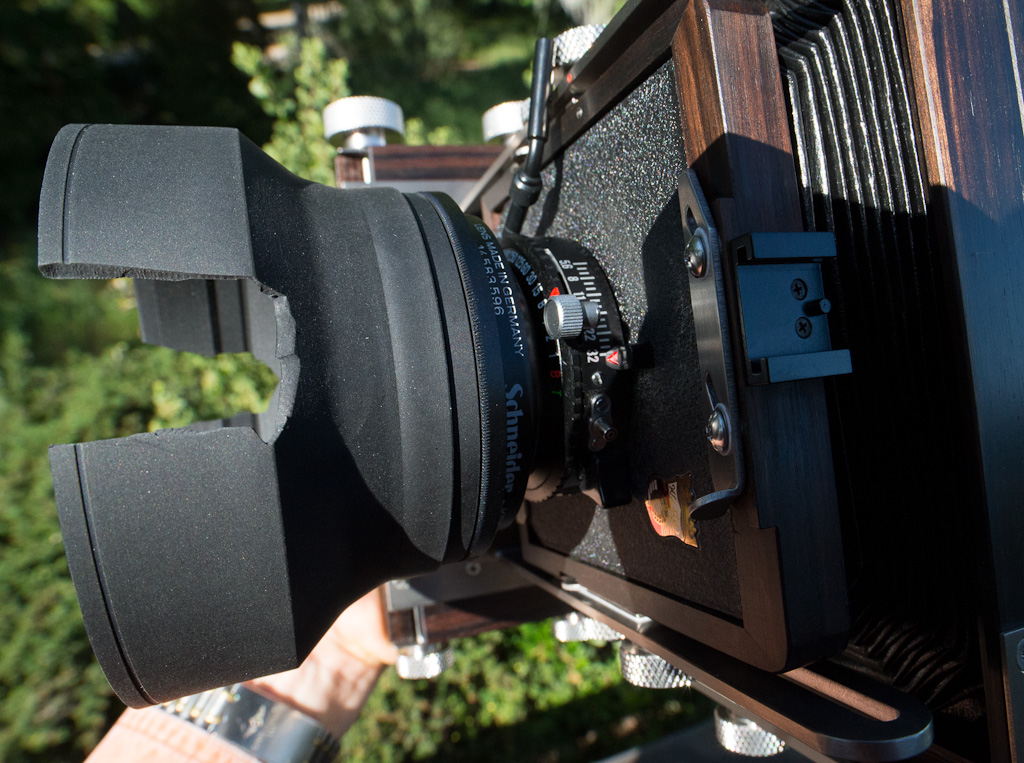When they’re using film, view camera photographers don’t need lens hoods. They only need to shade the lens at the instant of exposure, and the perfect implement to do that is right at hand: the dark slide they just pulled out of the film holder. When you’re making slit scan images, where the exposures can last hours, it’s just not practical to manually shade the lens, and the traditional implement is unavailable anyway.
At the same time, the effects of flare are much more damaging on slit scan images than on normal photographs. Usually, a little flare just causes a loss of contrast which may be more apparent in one part of the image that another. In the slit scan photograph, if the flare varies over time, you get bands of light and dark, contrasty and flat; they are really ugly.
I’ve been trying to use lens hoods to reduce the flare in my slit scan pictures, with only moderate success. Yesterday, I happened upon the solution. It occurred to me that I could heavily shade the area to the right and left of the slit. I only needed to open up the hood in a vertical direction.
A pair of scissors applied to a rubber lens hood, and I was ready for my first experiment. I picked my most problematic lens, the 47 mm. Here’s what it looks like with the hood on it:
This rather unaesthetic solution works perfectly.

Leave a Reply